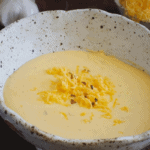Since the first espresso was served over 100 years ago, coffee technology has dramatically improved. Choosing the right coffee beans for espresso has never been more confusing, even if it has never been easier to brew from home.
There are hundreds of options on the internet: Bold? Fruity? Fair trade? Keto? These words on the label do not guarantee the coffee will taste great or be ethically sourced. You may have guessed that the most important part of making good espresso is to get the right beans. Bad beans cannot be cured by fancy machines.
We will show you how to choose the best espresso beans based on your tastes and preferences, so you can be confident with every shot!
What Are Espresso Beans?
There are no special beans used for making espresso — they’re just coffee beans! As you’ll discover, beans can be selected and roasted to create different flavors, but espresso is simply a method of preparing coffee. The coffee we drink at the end of the brew process is espresso; all you need is an espresso machine and any kind of roasted coffee beans.
The brewing of coffee can be done in an espresso style with any coffee bean, and an espresso blend or espresso beans can be used for brewing.
However, sometimes espresso blends taste awful.
Traditionally, espresso blends are roasted extremely dark, resulting in unpleasant char and ash flavors. For decades, people have assumed it’s “just how it is,” that the bitter taste is the price of having caffeine.
There is no reason for it to be this way! The bitter espresso doesn’t have to be your only option.
There are many subtle and complex flavors in espresso. Fruity and floral aromas, fascinating spice and pine notes, pleasant citrus acidity-we’ll show you how to find these A+ beans so you can leave bitter coffee behind.
What Are the Best Coffee Beans for Espresso?
Coffee is a fruit with a wide variety of varieties. Some people gravitate toward coffees from particular countries or regions, just like some people prefer certain apples (granny smiths are nothing compared to those juicy honeycrisps!).
Additionally, certain apples make better pies. This depends on many factors (including preference), but the chemical composition of an apple is critical. Similar to tea, some coffees contain more sugar than others, which affects how they brew and taste.
Love a cup of coffee at a local coffee shop? You can ask the barista where it comes from. They’ll be happy to help you figure out what kind of coffee you like.
It is not an easy process to make espresso. Hence, delicate single-origin coffees that change a lot as they age are not our top recommendation (unless you are up for a challenge). Speaking of coffee beans, we also have compiled a guide that will help you choose the best coffee beans for espresso.
How Fresh Should Beans Be?
Freshly roasted beans are unbeatable. The best espresso beans are between 7-21 days post-roast. Why? Crema.
In espresso, the cream-like top layer is the crema. CO2 microbubbles are released during the brewing process when hot water hits fresh coffee. Adding cream to an espresso shot can give it a wonderful depth of flavor.
With no crema, the espresso just tastes like really strong black coffee. A coffee loses CO2 as it ages and produces less cream. Whenever you buy super fresh coffee, make sure to use it as soon as possible!
What Is the Best Roast Style for Espresso?
It doesn’t matter what kind of coffee you use to make espresso. “Espresso beans” and “espresso blend” simply mean the roaster created the blend specifically for espresso.
Generally, darker roasts tend to taste more consistent in espresso, which is why we recommend them.
The reasons for this are two:
- Darker coffee is more forgiving. As we said, lighter roasts change a lot as they age, making them difficult to use for espresso. Darker roasts have fewer noticeable changes, so they are more reliable day-to-day.
- Darker coffees pair better with milk. Usually, deeper notes, such as chocolate, caramel, and nuts, pair well with milk (lattes, cappuccinos, etc). When we add a hint of floral or fruity flavor, everything comes together harmoniously.
Our Espresso Roast, for example, is a medium-dark roast with notes of vanilla, sugar, and strawberry zing. The perfect blend of classic and inspiring.
The Dark Roast, on the other hand, has more bold and rich notes of chocolate, caramel, and maple. I swear, it’s delicious.
Do You Prefer Consistency or Adventurous Flavors?
You should ask yourself: how long am I willing to spend making this espresso taste good? How important is it to have the same taste every day?
When it comes to espresso, most people are creatures of habit. Sometimes we just want something familiar with that classic dark roast taste, but with a little more flavor.
A year-round espresso blend that has been formulated for balance and consistency. You won’t have to fuss with the recipe or fall in love with a coffee that disappears from the shelves at the end of the season.
If you’re looking to challenge your espresso-making skills, you might prefer something small-batch and ultra limited edition with funky, fruity flavors. Those who brew these types of coffee correctly will be inspired, challenged, and rewarded.
Small-batch, single origin espresso is the ‘adventure mode’ of coffee.
Was this helpful?
Hi there! I’m a food enthusiast and journalist, and I have a real passion for food that goes beyond the kitchen. I love my dream job and I’m lucky enough to be able to share my knowledge with readers of several large media outlets. My specialty is writing engaging food-related content, and I take pride in being able to connect with my audience. I’m known for my creativity in the kitchen, and I’m confident that I can be the perfect guide for anyone looking to take their culinary journey to the next level.







